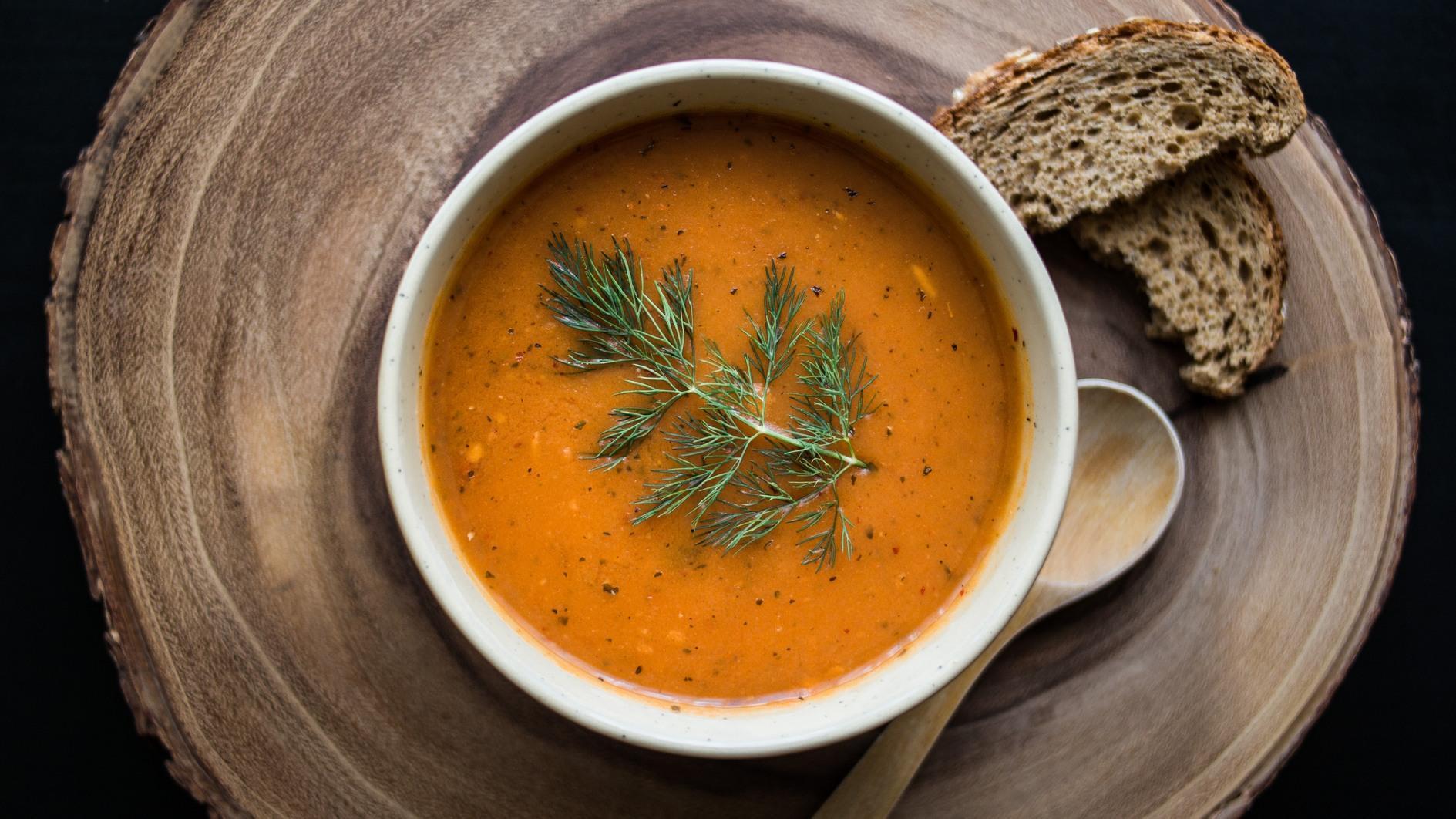
The holy month of Ramadan has just started on March 1. It will be a whole month of communal tables shared with friends, relatives, neighbors. When Ramadan comes, there is always soup on the table at the time of breaking the fast, when “iftar” evening meal is served at sunset. Soup also comes to the rescue for a quick “sahur” meal before the crack of dawn during the month of dawn-to-dusk fasting. The tradition is breaking the fast with a sip of water and a piece of date or olive and a further assortment of small bites and then starting the meal with a choice of soup, an omnipresent item at an “iftar” table. When it comes to “sahur” time, most people have something quick, or just a breakfast sort of start for the fasting, but again a warm soup, usually leftover from the “iftar” makes a quick fix, a filling but not heavy choice just before the rise of the sun.
Soup: A traveling word
Soup is called “çorba” in Turkish. It seems that the word has traveled beyond borders to afar geographies. Sopa, soupa, chorba, churpa or soup... All derive from the Persian word “shorba.” They all derive from the Persian word “shorba.” “Shor” means salty and “ab/ba” means water, so it is literally a watery dish. However, in today’s Iranian cuisine, “shorba” is a type of porridge-like dish made mostly for the sick. Soups are called “aş.” Interestingly in Ottoman Turkish “Aşbaz” was the name given to a person who cooks soup, in other words, a cook and “Aşbazhane” meant the kitchen.
Soup must be the In Europe, Asia and most of Africa, this single word is enough to avoid going hungry. Anyone who knows the word can feed themselves in lands stretching from the Balkans to China and India, from Ethiopia to the Maghreb countries. You don’t need to know the local language in the restaurant you go to. When you see “ciorbá” in Romania, “corba” in Croatia, “chorba” in Moldova, Tunisia, Algeria and Morocco on the list, confidently say “Çorba” and a familiar taste will surely appear. You will ask for “shorva” in Afghanistan and Pakistan, “shorpa” or “shurpa” in the Turkic Republics and “shulpa” in Tatarstan. To expand the geography of soup, it is enough to learn similar names derived from the same root: “sopa” in Spain and Portugal, “soupa” in Greek, “soppa” in Swedish, “suppe” in Danish, Norwegian and German, “zuppa” in Italian. As seen, the word has traveled a long way, ending in endless variations in afar geographies.
Secret to smooth silkiness
In this vast world of soups, there must be endless varieties in local cuisines, sometimes thin as a broth, sometimes thick or chunky like a meal-in-itself. In Türkiye, especially smooth lentil soup is a priority, especially at the time of Ramadan. The smoothness of the “mercimek çorbası” aka lentil soup is often tagged with the word “süzme” meaning strained. The creamy velvety silky texture of this particular lentil soup comes from being strained, so only the very core essence of the lentils, that starchy purée forms the base of the soup. There is no cream or whatsoever added, but the creaminess comes from this base. The reason of the popularity of lentil soup, especially during the month of Ramadan to break the fast is because of this smooth texture that soothes the empty stomach acting like a restoring ointment. In Ottoman cuisine, there used to be a similar dish made with boiled chickpeas, again strained to obtain a smooth texture, but somehow it disappeared from today’s contemporary Turkish cooking, perhaps because the popularity of the lentil soup took over.
The finest of soups: ‘Öz Çorba’
When it comes to silky creaminess, one needs to mention a regional specialty from Gaziantep cuisine. Even the name indicates its fineness, it is called “Öz Çorba” with the adjective “Öz” meaning the essence or core of something. The word is also used for an extract, in this case, it is the extract of wheat berries, boiled and strained, to obtain that silky starchy core of the wheat kernels. This soup is one of the most elegant and treasured soups of Gaziantep cuisine. It is considered a show of hospitality for distinguished guests due to its flavor and its laborious preparation. Indeed, when the founder leader of Türkiye Atatürk and Marshal Fevzi Çakmak visited the city, they were served this soup. It is said that they noticed its pure elegance at once and even asked for the recipe.
“Öz Çorba” is not a complicated soup with too many ingredients, on the contrary, it is rather straightforward with only a few items involved. But it is both the taste and texture that makes it so special, and of course, also all the effort and toil that goes into the preparation. Although the recipe seems to be simple, it takes a lot of effort to extract the essence of the softly boiled wheat by crushing it through a sieve or colander. The starchy extract gives the smooth satisfying mouth feel and consistency without using flour, and then there is also a strained yogurt and egg mixture used to thicken the soup that adds to the creaminess. Moreover, there is a rich umami taste that comes from bone-stock or turkey broth that is used instead of water. Some people claim that turkey broth works the best for this soup, though nowadays chicken broth is also replaced. Once upon a time, turkey was quite common in Antep cuisine, every household used to have a huge pot just for boiling turkey. The combined tastes and textures make everything come through elegantly and beautifully, but there is more to it that finishes the soup with a final touch. A splash of melted clarified butter with green pistachios and peeled almonds, with a touch of cinnamon!